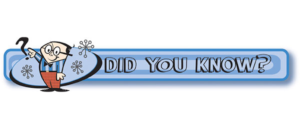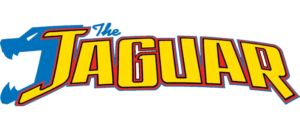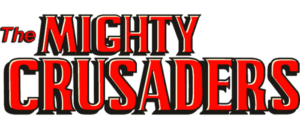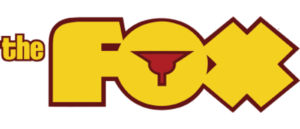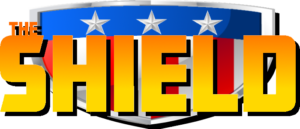Cary Burkett Interview
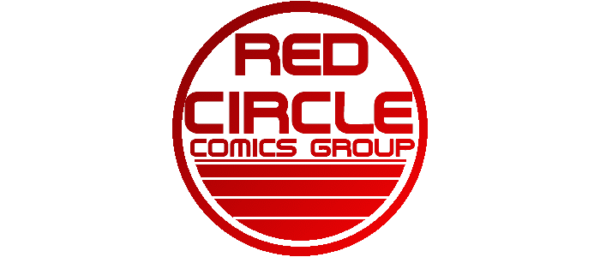
What was your first introduction to the Mighty Heroes?
As a kid, I was always on the lookout for new super-hero comics, always interested in checking out new titles regardless of the brand. I had read some Fly issues in the 60’s and some Jaguar issues, and thought they were okay. And when the Mighty Comics started coming out, I checked them out as well. It was very frustrating because I really wanted to like them, but found them embarrassingly bad. I hated the whole “camp” thing as a kid, hated it in the Batman TV show and hated it in Mighty Comics. But I kept coming back to the comics because at the time I was really interested in the so-called Golden Age of comics and hungry to find out more about it. The characters in the Mighty Crusaders seemed to me that they might have been very interesting if the stories hadn’t been so “camp” , and I was frustrated by that approach.
But for those who claim that Mighty Comics were more ridiculous than other super-hero comics of the period, take another look. This was from around the same era when Jimmy Olsen was turning into “porcupine boy” or “Pinocchio-Olsen” or some such every month. It was the era of Krypto leading the Legion of Super-Pets; Bat-Mite; the Bizarro World; and so forth. And who could forget that great hero — Bouncing Boy! There’s a character to strike fear in the hearts of criminals. And what about Matter-Eater Lad from the planet Bismoll? He could eat anything! What a super-power! The point is not that these were bad comics — some of them had a real charm – it’s just to point out that super-hero comics were not taken all that seriously in the period when Mighty Comics were published.
I remember once when Mike Barr and I were sharing an office at DC Comics; he dug back into the archives of the comics from this period to find a particular issue of Lois Lane. In the sequence he showed me, Lois was trying to figure out a way to get in touch with Superman. She couldn’t find him, but she figured that since Superman always came to her rescue, the best way to contact him was to JUMP OFF A CLIFF so he would come flying in to save her from death. And so she did! And he did! We both howled with laughter about that. And that episode was published, I think, only a few years before Mighty Comics started up.
As for the art, Paul Reinman was no worse than Bob Kane on Batman. I’m talking about the stuff Kane actually drew, not the many ghost artists like Joe Giella and Dick Sprang. And John Forte was drawing the Legion of Super-Heroes around that time; not a period of stellar art for them either. Comics were a different world, then.
Well, a long-winded answer; but hey, you asked
What brought you over to Red Circle Comics?
Rich Buckler brought me over. Actually, I think I called him looking for work, but it might have been the other way around. Rich and I were acquainted from DC Comics, not close friends, but knew each other. Rich was one of the best artists to draw my stories at DC. In particular I remember he drew a number of my scripts for the Superman/Batman team-up feature in World’s Finest Comics.
I was always glad when Rich got assigned one of my scripts. It wasn’t just his drawing talent, but also the fact that he had a strong sense of story-telling that I appreciated. Rich could do the flashy, cinematic techniques and enhance a sequence, but he could also do the solid, less-noticeable things that just made the story flow better. I’d see little touches he put in my scripts that helped clarify things; a little establishing shot panel added here, a transition panel added there to smooth things out. Rich knew what he was doing, and I learned stuff from seeing how he handled my scripts.
And Rich was my sole connection at Red Circle. I didn’t know anybody else there, though I knew some of the freelancers who were doing work on the books. But no one in management.
I was very interested in doing a team super-hero book at the time, and I always thought the Mighty Crusaders had potential. As I recall, Rich asked me what I was interested in doing, and I told him I wanted to do the Crusaders. He said he was writing and drawing the first couple of issues, but after that, he wanted me to take over as the regular writer. At least that’s the way I remember it. There were certain initial restrictions, I recall. The Comet had been written out for the time being, and the Original Shield was also not to appear for several issues because he was part of a plotline called “The Trial of the Shield” that was being run as a back-up series.
Rich also offered me an issue of “The Black Hood” to write, though I was less interested in that character and was never intended to be the regular writer.
Was your run on the Mighty Crusaders supossed to last only 4 issues? (4, 5, 7, 8)
My recollection is that I was to become regular writer for the foreseeable future for Crusaders. I seem to vaguely recall Rich telling me that there might be an issue or two written by someone else dealing with the Original Shield. As it turns out, that did happen in the middle of my storyline. Issue #6 was a kind of weird interruption, and placing it in the middle of my storyline didn’t make sense. I’m not sure why that happened, but my guess is that the art was late for my story, and they had this issue already completed. Who knows? I think by the point in time that issue was published, Rich was either gone, or on his way out. And once he was gone, my tenure on Crusaders was over as well.
What were your plans past issue 8?
I don’t remember much about the plans I had for the Crusaders after the four-issue storyline dealing with the Jaguar. I know there was in the back of my mind the idea to continue trying to develop individual heroes within the context of the team-adventures, and particularly those who didn’t have their own features. Jaguar was one at the time, and the Web was another. In the few discussions I had with Rich, I remember wanting to flesh these characters out, personality-wise, so that each one was distinctive and played off the others in a unique way. I felt we should try to emphasize the differences between the characters so that they had different speech-patterns, different ways of reacting to things, so a reader could read a speech balloon and know which character was speaking even before seeing who the balloon was pointing to. Of course that can only work in a limited degree in a book like Crusaders, where many of the characters were appearing in their own features.
I remember admiring very much the Justice League stories that Steve Englehart wrote, and the way he developed the personalities of those characters. So many of them were appearing elsewhere, and in fact were being defined in their own features. He couldn’t stray too far from that, and yet he was still able to do some subtle things to differentiate between the characters. Think about it: aside from Green Arrow and Wonder Woman, most of the time the only way to differentiate between the speech patterns of those characters was whether they said, “Great Krypton!” , “Great guppies!” or “By Thanagar’s moons!” You could switch dialogue between Flash or Green Lantern without noticing it; and to a lesser extent, Hawkman, Atom, and Aquaman. Unless, of course it was something really specific to the powers of that character like, “Gasp! I’ve been out of water more than an hour! Starting…to feel…faint!” Englehart, more than any other writer I remember, really pushed to help give the characters greater definition without re-making them.
And that’s the direction I hoped to go with Crusaders. I wanted to broaden the differences between the characters, highlight their unique qualities, make them come alive a little. I’m sure in one of my notebooks I’ve got little character sketches and thoughts that I developed for each of the characters. If there’s any interest in seeing them, I’ll try to dig them out and send them to you.
Of course, with Red Circle just starting out, I wrote my first few issues of Crusaders without having seen any of the other books, except for Black Hood. So I didn’t have a strong sense of who these characters were in their own books. Rich gave me some background which helped, but I really expected that I’d be able to go a little deeper once I had seen how the characters were being handled in their own features.
Can you shed some light on why the imprint changed from Red Circle to Archie Adventure?
I don’t know anything about the behind-the-scenes stuff. To me, the switch in titles is a clear signal that Rich was gone by that time, even though his name may have appeared on some of the books as editor. Those issues were probably developed by Rich, and still around as inventory, but I doubt he was still on staff when they were published.
Those in management no doubt felt that the “Archie” title was more recognizable, and might have wanted to try to reach out to their traditional, younger audience.
The problem at Red Circle was that there really was no solid definition to the characters, to speak of. Each writer that came along had his own ideas about the characters. Some of the ideas were very interesting, but they didn’t always mesh with what the other writers were doing. I think Rich was trying to bring that about, but was dealing with a lot of creative people who were into doing their own thing, and not looking at the larger picture. Rich got some great talents to work at Red Circle, but never really was able to instill a common vision into the creators. There was a problem with consistency and cohesiveness.
And after he left, things totally fell to pieces in that department. I understand and to some degree sympathize with the argument that too much continuity can bog things down in comics. But there’s got to be some consistency. It’s like each new writer tried to re-create these characters from scratch. That’s very confusing to readers.
Did you create any characters for the series?
No new heroes, if that’s what you mean. There were too many already in the Crusaders, in my opinion. My books had Fly, Fly-Girl, Lancelot Strong, the Web, Jaguar, Black Hood, Darkling, and Dr. Reeves. And two members that didn’t appear in my storyline were Comet and the Original Shield. That lineup was dictated to me. Darkling and Dr. Reeves were creations that Rich had added in the first three issues. I think that Gary Cohn actually created Darkling, if memory serves, working with Rich. The Crusaders did need another female, and I thought Darkling had potential, but I knew very little about her or the limits of her powers. I think I spent more time talking on the phone with Rich about exactly what Darkling could do than about any other subject. Somewhere down the line, I know that Rich had plans to develop Darkling more. Maybe there was going to be an issue written by Gary that went into her background in more detail; I don’t recall. But I know that was a task reserved for another writer, and I had no plans along those lines.
How did you like the visual adaptation of your stories?
I said I always liked Rich’s work on my stories, and I wish he had drawn all the Crusader stories. And one of the reasons I wanted to write the Black Hood issue was because Rich told me that Gray Morrow would be doing the art.
The origin of the Jaguar. Was this your idea, or was this a collaborative effort?
I take full blame for this. Jaguar was one of the Crusaders who didn’t have his own feature at the time. I thought it was important to dig into the roots of the individual characters, mores than the little one-page origins that had been produced. And the Jaguar’s origin was irresistible to me, because it left so much unexplained. Essentially he found a magic belt and turned into the Jaguar. But where did the belt come from? Why was he chosen to find it? Those were not really important questions in the 60’s, when Jaguar first came out. Essentially, it’s the same origin as Thor. But of course as Thor became successful, the questions about where the magic hammer had come from and why Don Blake found it had to be answered. I thought it would be interesting to explore the same questions with the Jaguar.
And I thought it would help define the Jaguar, make him more distinctive if he had a mythology of his own that would help give him a different type of motivation than the other characters. Instead of Father Odin, however, the “mentor” I created for him was a sort of Guardian Animal spirit, Varigon. And of course seeds are sown then for possible future conflicts if Varigon’s agenda doesn’t coincide with some Crusader missions. At least this was in the back of my mind.
Did you try to spotlight one character more than the others?
Not really, except that that plotline centered around events connected with the Jaguar, as I mentioned. Still, I think I tried to give all the Crusaders a chance to show their stuff in some way. Different stories do tend to highlight different characters, but in general, I think every hero on a team should have a significant contribution to make in team books.
Where did the Sub-Cycle come from? (Black Hood 1, page 13)
This is the cycle that Comet gave the Black Hood in one of Rich’s first issues of Mighty Crusaders. I didn’ t come up with it, I assume it was Rich’s idea. It does strike you as sort of silly in the context of Black Hood’s own comic, as drawn by Gray Morrow, with a very “realistic” approach to weaponry. I think Gray was very meticulous in depicting accurate versions of the different types of guns Black Hood used. And then here is this science-fiction cycle given to the Hood by a guy who has his own spaceship. As adults, I suppose we are bothered by these odd stylistic “jolts” , but most kids don’t have a problem with them. It’s part of the convention of the superhero genre. In some ways, I suppose, Gray would have liked to see Black Hood move outside of those conventions, but that couldn’t happen while he was a member of the Crusaders. Still, Gray’s Black Hood certainly went in that direction.
Let me also say that I was really surprised to see that issue published as Black Hood #1. When Rich and I plotted that story, he gave me some very specific background information to follow up on. As I recall it, my story was to follow a story in which Kip Burland falls in love with a deaf girl. The deaf girl is then murdered, which gives him impetus to fight crime. I included a brief flashback to this event in my story, thinking it would have happened in the previous issue. But there was no previous issue. Maybe this event happened in a digest or something, I don’t know if such a story ever appeared. But if I had known my story was going to be a first issue, I would have gone into a lot more detail about this background.
Any insight as to why the line was cancelled?
No, though they always say the bottom line is sales. In a large sense I’m sure that’s true.
Thank you, Mr Burkett, for agreeing to help me out here. I do appreciate it!
Hey, nice to be asked. I commend your website and the work you put into what is clearly a real labor of love. It’s the kind of thing about comic fandom that I really appreciate.

